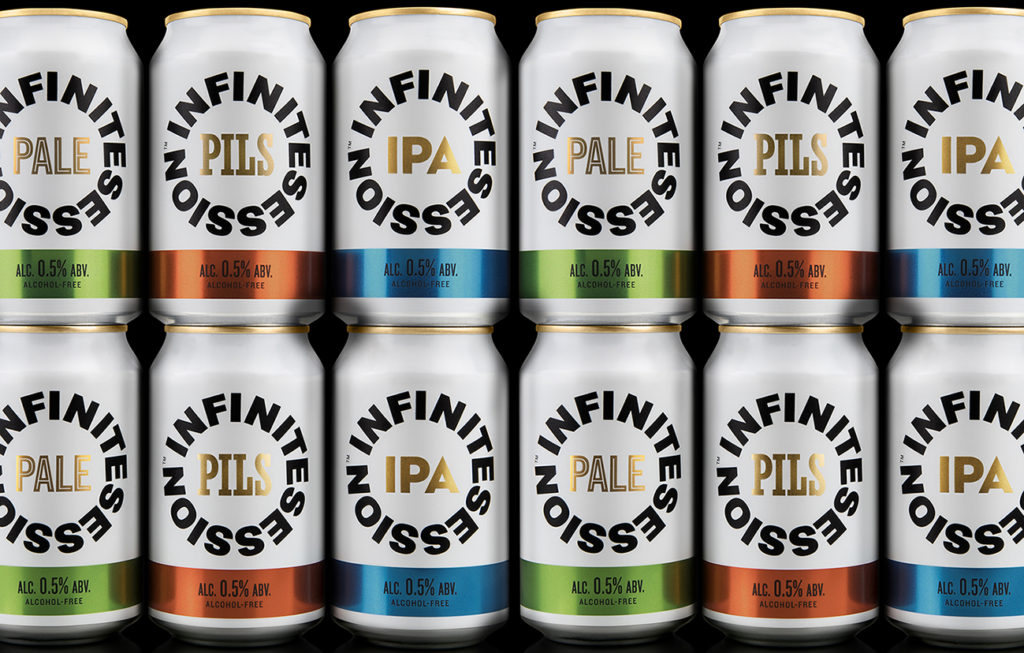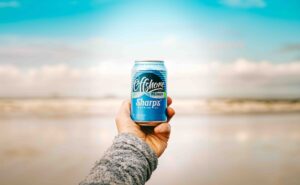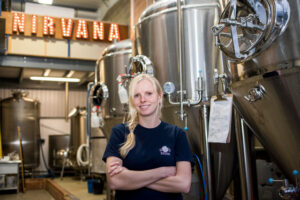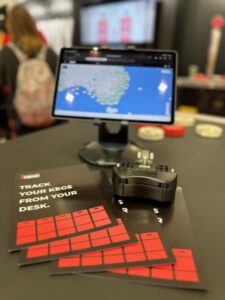It’s called non-alcohol beer, no-alcohol beer, non-alcoholic beer, very-low alcohol beer, NA, or malt beverage. It’s also been called a lot worse. However, thanks to a growing demand, both big and small brewers are putting out something you just might find yourself enjoying. Velo Mitrovich reports.
About a million years ago in the mid 1970s I was in the US Army stationed at Ft Bragg, North Carolina. It was not a good time to be in the army. The government was desperately trying to show that the all-volunteer peacetime army could work without a draft, so they took anyone and I do mean anyone.
One day in the middle of July, the powers that be decided they needed to throw a party to boost morale. “269 Aviation Battalion will celebrate this Friday from 1200 to 1600 hours. You will be there and you will have fun.”
While North Carolina is full of lakes, ponds, and natural beauty, they gathered all 200 plus of us in what looked like a giant dirt parking lot in the middle of nowhere, surrounded by scrub pines that were maybe about a meter high. There was absolutely nothing to do there except for one thing.
The barbeque that was provided – you had to pay for. Soft drinks, you had to pay for. But the beer – all 20 zillion cans – was free.
Some supply sergeant must have figured: Mmm, hot as hell day and no shade. “Sir, each soldier must be provided with at least 12 cans of beer for pure survival reasons alone. Anything less and we could have a medical emergency on our hands.”
Because this was survival we’re talking about, they opted to have about a dozen open trailers placed strategically around the area, filled with ice and beer so no soldier was ever far from a cold one and there would be no lines.
Sounds great? No, these guys were all idiots at the best of times. You did not want to get them drunk.
I don’t recall why, I suspect it was because Old Milwaukee was the beer they choose, but I choose not to drink. So there I was, the only one completely thirsty and sober person in a field of over 200 drunks.
Within an hour, the command had given up the idea of being in command, figuring the beer would ultimately run out and order and discipline restored.
It doesn’t require a vivid imagination to picture what was soon happening in the field. There were arguments, fights, smack-downs, and more fights. The two medics on duty were busy putting in stitches and bandaging noses.
Because a couple of drunks decided it would be fun to push over the port-a-loos with someone inside, the porta-crappers were smashed and unusable. A few soldiers couldn’t be bothered to walk over to the scrub pines and pissed where they stood like mules.
At one point, I watched a staff sergeant pass out drunk, face down into a beer trailer. If his friends hadn’t pulled him out, he would have drowned, or had his face frozen, or both.
Promptly at 1600, those still standing got into their cars and drove off like it was the start of the Indy 500 except on a dirt track.
Looking at these drunk dunderheads behind their wheels, I decided to be in no hurry to leave. I looked over the field that looked like it was out of a war zone – in hindsight, it just needed the end music from Platoon playing.
The field was littered with hundreds of beer cans, overturned trailers, vomit, the smashed-up port-a-loos, and someone’s boots – how could you not notice your feet were suddenly bare?
I shook my head and went dry for 10-years.
During this dry decade, I tried to find alternatives. There was near-beer, which was started in the US during Prohibition. It was horrible – and I’ll just leave it at that.
After a long, long search I found a couple of German alcohol-free beers but these were so malty, they tasted like something you’d give your kids if they had whooping cough.
Ten years later, I was living in Seattle, in the Coast Guard now, and was with some friends at a pub in Pioneer Square. While they were drinking their pitchers of Bud, I was getting ready to order a black coffee. The bartender though had other ideas for me.
“You should try a Ballard Bitter.”
“What’s that?”
“It’s better than what they’re drinking,” she said, pointing with her chin over at my mates. “It’s an IPA from this small brewery – Redhook – that’s just opened up the road. You’ll really like it, trust me.”
IPA? Small brewery? I had no idea what she was talking about, though I was 100 percent sure whatever it was, it had alcohol in it. But then, she did have an English accent so a course I completely trusted her.
I took one sip and shouted out the F-word, so loudly, it’s still probably floating over Seattle. Ballard Bitter was everything that I had ever wanted in a beer, like I had spent my entire life waiting for that rush of hop flavours.
With that, my quest to find a non-alcohol beer that tasted like beer ended – until now.
It seems like about every decade or so for the last 40 years, the beer industry has rolled a non-alcohol beer and said this is the future, but if you watch the Simpson’s, you know how this always plays out.
When Duff’s Brewery goes alcohol free – due to Springfield’s local prohibition – the owner comes out and says he knows Duff’s fans drink the beer for it’s great taste, not for its alcohol content. And then three hours later, he’s locking the gates of the shut-down plant.
Why will this time be any different for alcohol-free?
In asking random people at this year’s Craft Beer Rising Festival at Truman’s and at the Pure Gym I go to, it seems very much like you can draw a line.
For those over 30, alcohol is part of the beer drinking experience, with numerous people – both male and female – telling me it was at least 50 percent of the reason why they drank beer.
Those younger, however, said they were open to the idea of non-alcohol beer – if it tasted good – and could see sometimes when it would be preferable.
When pressed, the reasons given were: It’s in the middle of the week; or you’ve already had one regular beer so now you switch over to alcohol free; or you want to look like you’re drinking; or you’re in a situation where you need to keep your wits about you, i.e., meeting the future in-laws; or you feel better not drinking; or it seems healthier; or you don’t feel like drinking but still want a beer.
While my generation in the States sees shame in drinking alcohol free and it would be something you’d try to hide; for the Millennials, not at all.
As far as tasting good, at the CBR show, there were numerous offerings of non-alcohol beer, with some brewers such as BrewDog and Brooklyn Brewery offering it alongside their regular. Mitch Adams of Euroboozer plied me with bottles of German non-alcohol beers that they import along with regular European beers. Online beer shops such as Beerwulf and Dry Drinker have a huge assortment to try.
Thrown into this mixture of no-shame and tasting good is the report last August in which The Lancet said no level of alcohol consumption improves health, and the massive marketing campaign that Heineken is doing on both sides of the pond with its Heineken 0.0 lager in the familiar green bottle.
Suddenly an ice-cold non-alcohol beer starts sounding good.
Taking Europe as a whole, around 10 percent of all beer sales were non-alcohol last year. All are expecting this figure to jump for at least the next five to six years.
How big of jump, that’s the question.
Some market research groups are claiming that worldwide it will double in growth, being worth a staggering £20 billion by 2024. But, knowing how many of these research groups operate, I find it even more staggering that people believe them.
The UK papers have reported that last year our supermarkets saw a jump of 27 percent in the sales and/or consumption of non-alcohol beer. A magazine article said that in the UK, the sale last year off non-alcohol beer rose 60 percent.
While that sounds like every shopping trolley no longer has room for food – just non-alcohol beer – without knowing the actual figures behind the 60 percent, that could be six bottles or six million. Percentages are too easy to exaggerate and blow out of proportion as we know from the weekly health scare in any newspaper. You sold one can last year and five this year, way-hey, you just had an increase of 500 percent in sales.
But, what we can agree on, however, in talking with brewers and distributors, sales are rising and as I mentioned, the stigma that used to go with drinking non-alcohol beer is disappearing, especially with Millennials here in the UK.
Dry opportunities
In a December Brewbound podcast, Brooklyn Brewery CEO Eric Ottaway said that breweries needed to quit thinking of themselves as only makers of beer, but to look at other potential revenue streams, which includes non-alcohol beer.
He said that Brooklyn’s entry into non-alcohol beer is a way to diversify Brooklyn’s products offerings and build a buffer against beer’s overall slowing sales in the US.
Brooklyn spent a year developing its non-alcohol Special Effects lager that is now available in Sweden and which they had at the Brick Lane show. When will it be available Stateside, Eric wouldn’t say, but did say said that the US has had it backwards when it comes to non-alcoholic beer.
“If you were drinking a non-alcohol beer, there was something wrong with you. It was kept in the back of the bar fridge and carefully poured into a glass and given to you so nobody would see that you’re drinking non-alcoholic beer,” he said. “It was kind of an embarrassing thing. Whereas you go in Europe and it’s celebrated. It’s treated as the opposite in most countries. People would never sneer at you or look down at you like you have a problem.”
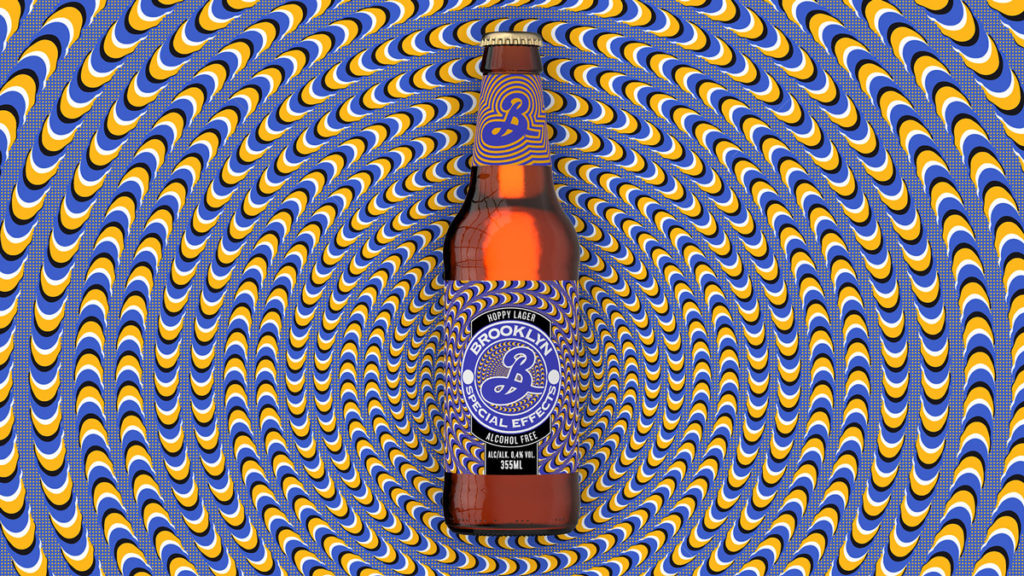
Ilaria Lodigiani, head of global marketing innovation, Heineken brand, characterises this as moving away from a focus on “can’ts” – such as pregnant women and designated drivers – to “don’t want tos”, who “like the taste of beer but just don’t want to drink alcohol at a particular moment.”
Lodigiani agrees that alcohol free beer is seen as something that’s “not cool”, but believes the brand equity of Heineken can play a big part in transforming perceptions. The business is putting its money where its mouth is: it has committed to spend 25 percent of Heineken’s marketing budget on its non-alcohol in every market
She thinks the potential for the product is broad. “It’s a zero-alcohol beer, but also very low in calories, low in sugar. The consumer mind-set is changing quite a bit – they’re looking for 100 percent natural products, but with less sugar, less alcohol.”
CMO Jonnie Cahill of Heinekens says: “It’s for beer drinkers who love beer…but sometimes just don’t want the alcohol. We are going to change the game, it’s like nothing else in the market.”
NA controversy
Non-alcohol beer first made an appearance in the US in 1919. Why, you ask? That’s when Prohibition became law. It was decided that the strongest a beverage could be and considered non-alcohol was 0.5 percent ABV and that’s where that magic number comes from – at least in most of the world but not here.
At present, to be “Alcohol-Free” in the UK, a beer brewed here has to be 0.05% ABV or below, while products at 0.5% have to be called “De-Alcoholised”, although some non-alcohol beers don’t have to have alcohol removed to be at 0.5 percent.
But, products from the EU and elsewhere, distributed in the UK can be 0.5% and still labelled “alcohol free.”
Confusing? Oh yeah.
Why doesn’t the government then put the marker at 0.5 percent and call it a day? Because, not all want this.
Steve Magnall, chief executive at St Peter’s Brewery, a producer of a range of 0.05% alcohol beers, says: “We’ve put time, effort and money into producing a zero-alcohol range of beers, so why should a 0.5% beer be branded as zero alcohol when it isn’t. Someone wishing not to drink alcohol doesn’t want a 0.5% ABV beer, that would be like feeding a vegetarian a tiny bit of thinly cut ham.”
A course, if someone comes out with a 0.04 percent or lower beer, they’ll be making the same argument against St Peter’s Brewery.
In Germany, where 0.5 percent is treated as the gold standard of alcohol free, there have been numerous tests regarding 0.5 percent and complete alcohol free. Their researchers didn’t see any difference in the effect it has on people.
Making it dry
Most of the time it starts off like a regular beer, from making a mash to the fermenting stage. But, while regular beer will now be bottle, canned or further aged, non-alcohol beer has to have its alcohol removed.
If you remember your school chemistry, alcohol has a much lower freezing temperature than water – thus the reason for that bottle of vodka in the freezer – and it has a much lower boiling point than water – around 78 degrees C. You can in effect, boil off the alcohol before the water starts boiling.
This additional cooking, however, gives alcohol free beer the taste we all can’t stand and it’s why most have been in the past heavy on the malt flavour. Hop flavours, forget it, they’re not going to happen with all that additional heat and cooking time.
The problem with boiling beer is that it doesn’t just remove the alcohol, it also destroys other flavour compounds that give beer its fullness and character. According to Brew Your Own, “The hop aromas will usually be driven off within the first five minutes, while the hop flavours will be gone within the first 15 minutes.” Which is why finding a decent alcohol-free IPA can be a challenge.
One thing most people notice with non-alcohol beer is that quite a few have a metallic taste that ranges from being very slight to quite pronounced.
Regular beer can have the same problem but we don’t notice it due to the hop flavours.
When brewers inject CO2 in alcohol-free beer, besides tiny bubbles in your drink, it also adds carbonic acid, which can give off a metallic or sour favour – which could be one reason why non-alcohol seems to work extremely well with sours.
Some brewers boil under vacuum pressure to reduce the boiling point thereby mitigating damage to flavour. A course, you need the additional equipment to do it.
That said, two American craft brewers, Jeff Stevens of WellBeing Brewing and Philip Brandes of Bravus Brewing, have taken on the challenge of creating craft non-alcoholic beer by using the vacuum boil method. Depending on the power of the vacuum, the alcohol’s boiling point can be lowered to around 40 degrees C.
A couple of friends and I tried WellBeing’s Heavenly Body Golden Wheat and Hellraiser Dark Amber. We all agreed if we were offered a Diet Coke or either of these two, we’d take the non-alcohol beers in a heartbeat. If we were offered the real thing or these two, that’s where opinions differed.
Another dealcoholizing technique that’s sometimes employed is reverse-osmosis. As Chow.com explains it, “…beer is passed through a filter with pores so small that only alcohol and water (and a few volatile acids) can pass through. The alcohol is distilled out of the alcohol-water mix using conventional distillation methods, and the water and remaining acids are added back into the syrupy mixture of sugars and flavour compounds left on the other side of the filter. Bingo—a non-alcoholic brew.”
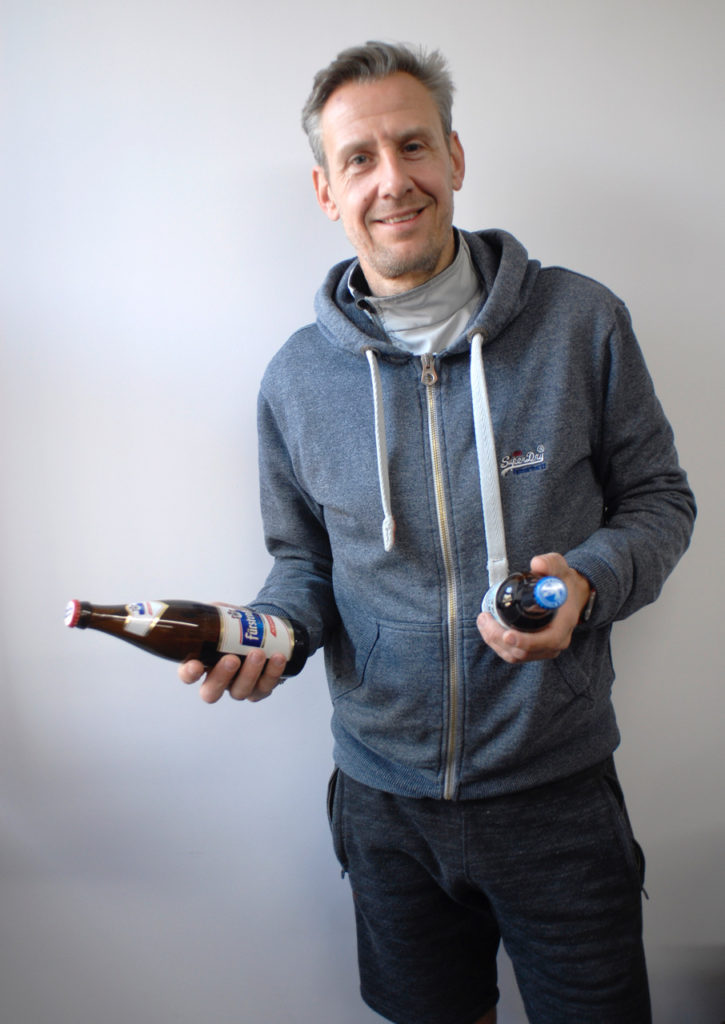
Because the main ingredients aren’t heated, this technique causes less flavour degradation, so it gives generally preferable results, though it’s more labour intensive and requires even more equipment.
Regular beer drinkers will tell you that no matter what brewers do, non-alcohol beers won’t taste completely the same because there’s no alcohol.
And they’re actually sort of right. While alcohol doesn’t really add any flavour, alcohol adds to what is called the mouth-feel of the beer. It gives it that dryness, and according to some, it can accentuate some of the sweet flavours in the malt. If you don’t believe me about the lack of flavour, next time you’re in the USA’s Deep South, try having a swig from a bottle of Everclear which you can sometimes find being sold at 190 proof.
After sampling some of the non-alcohol choices at CBR, I wanted to see what else was out there. In the UK, online seller Dry Drinker in Staines has Britain’s largest assortment of non-alcohol beers – 103 at last count – along with wines and spirits, so I went out there to meet with founder Stuart Elkington and to do a bit of sampling.
A bet
While in the USA what seems to drive craft brewers into non-alcohol is an alcohol-related problem, joining a dry-religion such as the Mormons, or other guilt, in the UK we don’t carry all those same issues and Elkington is an example of this. He went dry to win a bet with his wife.
They were trying IVF treatment for a baby and the doctor told Stuart that he should cut back on his drinking. His wife said he couldn’t make it six months and the bet was on.
During this period, Elkington says that he found he was feeling and sleeping better so he decided to continue staying dry. However, he still wanted a beer. Elkington says that he searched locally but couldn’t find anything. Complaining to his wife about it – and how this lack also seemed like there could be a business opportunity – she told him to either put-up or shut-up. Dry Drinker was born.
“People ask me if I’ve stopped drinking? ‘No’, I tell them, I just drink dry,” says Elkington. “While for many people this is a negative thing, for me I see the positives.
“With Dry Drinker, we’re not a preachy brand; we’re here when you want to drink; we’re here when you don’t.”
In the three years that Dry Drinker has been up and running, he says that he’s seen a big change in the market, with more people drinking alcohol-free beverages. But, it’s not always an easy slog to try to convince people to try it.
“There is a pre-conceived notion here that it won’t taste good,” he says. “But for European drinkers, it’s not that big of deal with European breweries presenting non-alcohol beer as just part of their range and not plastering non-alcohol all over the label.”
In sampling non-alcohol beers, some styles do work better than others, a fact that Elkington is quick to point out.
“Sours work well, they’re a good fit in the range like BrewDog’s Raspberry Blitz. IPAs can be found that are full of flavours and hops,” he says. “If you start with good ingredients, you get a good beer.”
Lagers don’t work as well, but that said, Germany, Latvia, and surprisingly Russia, all make a decent lager.
Elkington says that he is lucky right now with Heineken’s big push for their alcohol-free beer. “When the bigger brands come into the market, it reassures the consumers that it must be a good thing because they’re doing it.”
I asked Elkington with something like Brewdog’s sour, is it his job or Brewdog’s to market it?
“Looking at Brewdog’s latest accounts, they have just a bit more money than me,” he says laughing.
“Any brand we’ll work with. I tell them that I want to be their biggest supplier and distributor, but they need to do their job as well,” he says. “With the small UK brewers who are doing alcohol free, they know us and we work together.”
The elephant in the room for all of us who are involved in the beer industry is alcohol. It’s there – it’s most definitely there – but it’s something we never discuss at beer conferences, trade shows, in bars or in tap rooms.
Which in a way seems a bit screwy on our part if for many people, one of the main reasons why they have a cold one is to enjoy a bit of buzz, enjoyment, and temporary mental escape from what life throws at us.
Why do we pretend otherwise? It’s why people have been drinking for thousands and thousands of years, so why should we feel embarrassed to discuss it?
If we acknowledge that alcohol is an important part of our industry, then we should acknowledge, too, that sometimes we should be offering an alternative. Guinness has its H2O Guinness Clear – also known as tap water – in their campaign to drink moderately. Breweries across the world are offering up non-alcohol beers by the hundreds.
Should this alternative be, however, something coming from your brewery? For those of you who are small, no. It takes time and money to do it right and you have bigger things to worry about. For you medium to large brewers, let me pass on this bit of advice from the US Western days. The pioneer gets the arrow, the settler gets the land.
If this time around, alcohol free will be here to stay, which I suspect it will be, I don’t see much advantage in being the first out the gate. Let the big boys like Heinekens use their massive marketing budget to create the demand and then follow behind.
When visiting Stuart at Dry Drinker I enjoyed the Braxzz Porter. I’m not going to lie and tell you it was the finest porter I’ve ever had, but it was far from the worse, I’d place it right in the middle.
But, what in a way made it the best was, I had the enjoyment of the drink, without the sluggish feel afterwards. And, without giving alcohol blood levels a single thought, I got into my car and drove off, knowing I wasn’t a danger to anyone on the road – except for my usual crappy driving.
I’d say that was a pretty great alternative.

